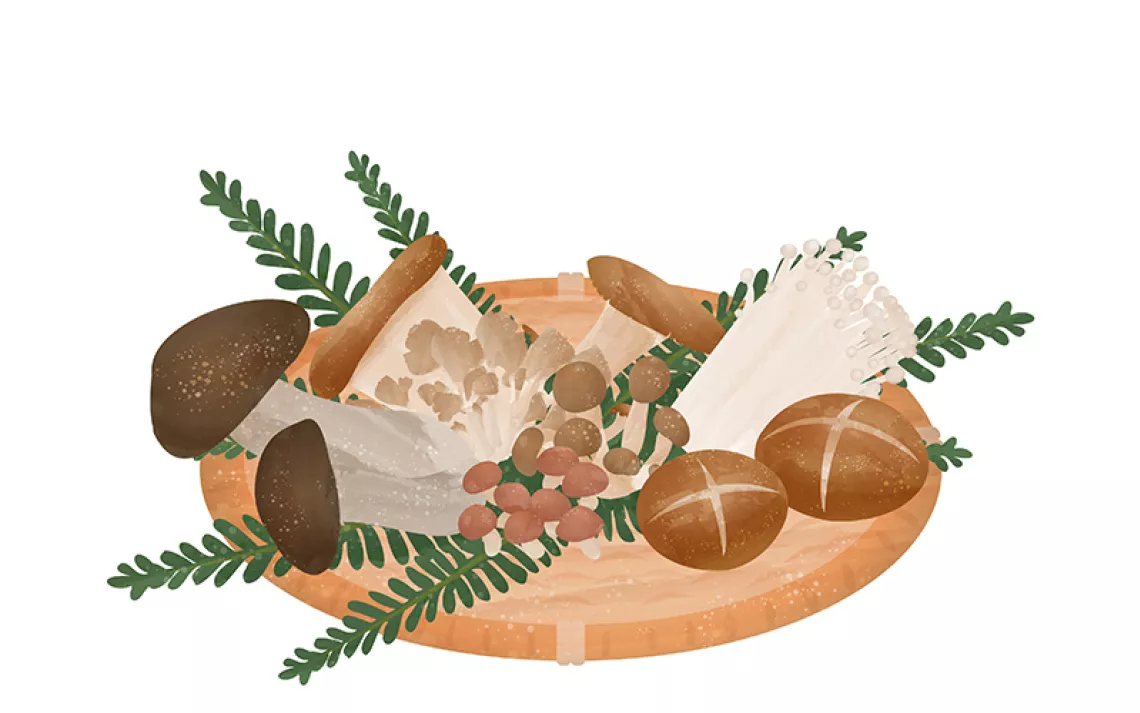How to Turn an Old T-shirt Into an Ecofriendly Produce Bag
It's time to sack your worn-out tees.
February 18, 2015
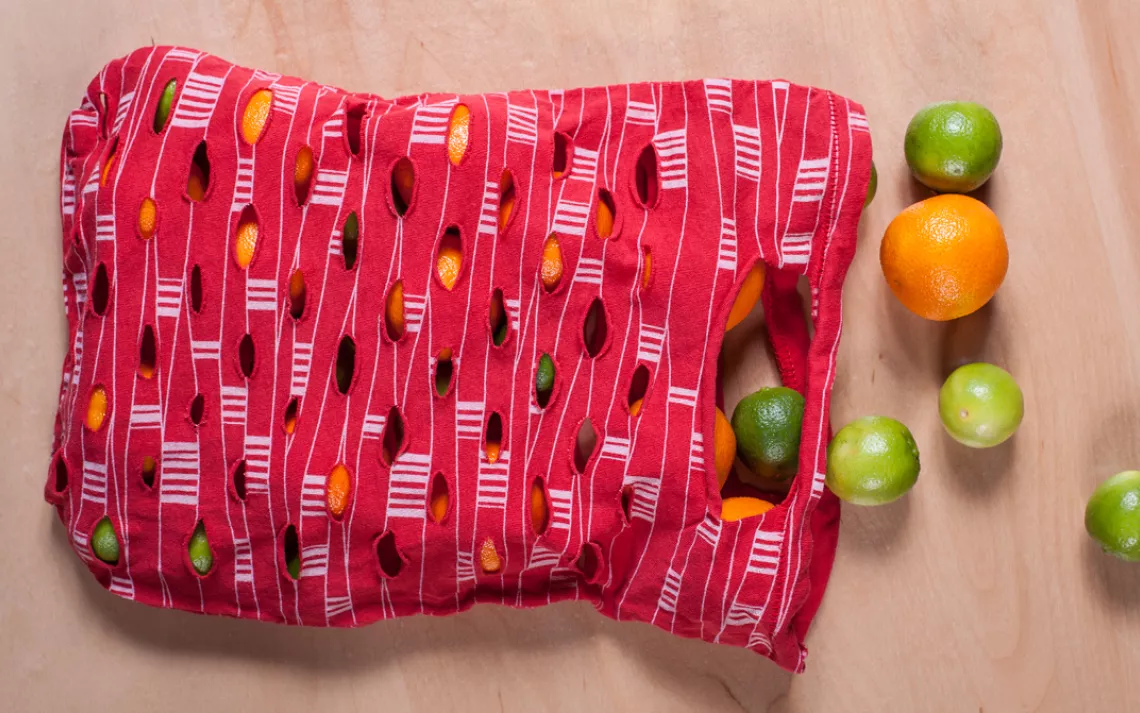
Click through our slideshow to see how to turn your T-shirt into a produce bag. | Photos by Lori Eanes
I know that I've accumulated too many T-shirts when my drawer won't shut. Probably half this messy pile is too worn-out to donate, but I don't want to toss the shirts in the trash. According to the EPA, Americans throw out more than 12 million tons of textiles each year. It all ends up in landfills, decomposing and slowly releasing methane, a potent greenhouse gas. Talk about a messy pile.
Better to send my discards to a textile recycler that will turn them into useful stuff like insulation and furniture stuffing; 2.3 million tons are recycled annually, which is the equivalent of removing 340,000 cars from the road. This burgeoning industry is primarily the purview of for-profit companies like USAgain, which has collection bins in 19 states, but San Francisco, New York, and a smattering of other cities have started their own programs.
Before sending all my unwearable shirts away, I decided to try some textile recycling of my own. I cut an old but usable shirt into the shape of a bag, sewed along the edges, and then made slits in the fabric. The result is a handy mesh produce bag. Almost anyone can easily make 10 of these. Now that would be a neat little pile.
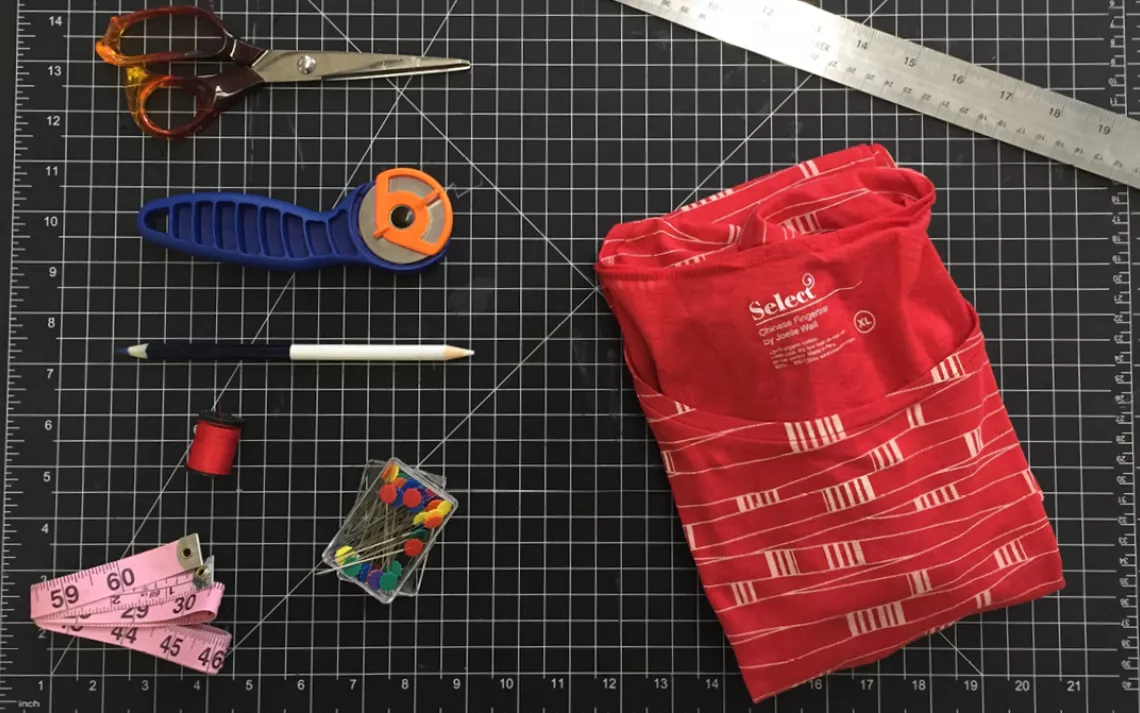
WHAT YOU'LL NEED:
T-shirt
sewing machine and thread
ruler or measuring tape
chalk or fabric pencil
scissors or cutting mat and cutting wheel
pins
DIFFICULTY LEVEL: 4
CONSTRUCTION TIME: 2 hours
You need to use a sewing machine, but no fancy stitching is required. Based on a project by Delia Randall at deliacreates.com.
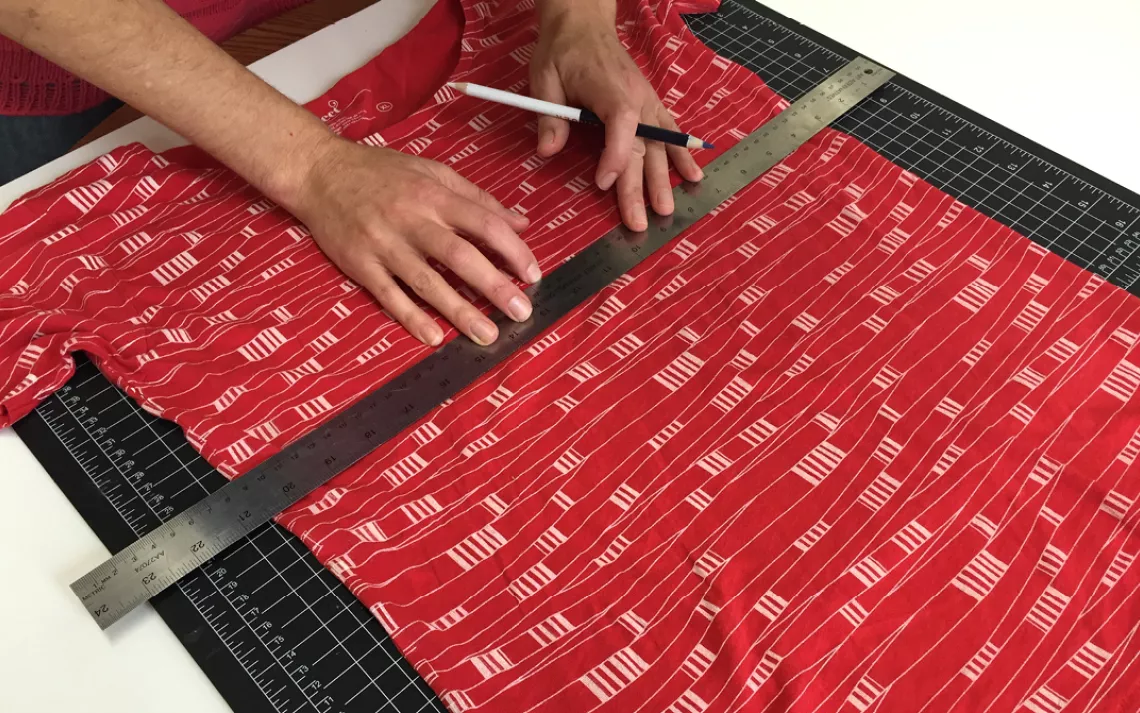
Turn your T-shirt inside out (psst – I forgot to do this step until later, but better to do it now). Lay it flat and draw a straight line across it under the armpits.
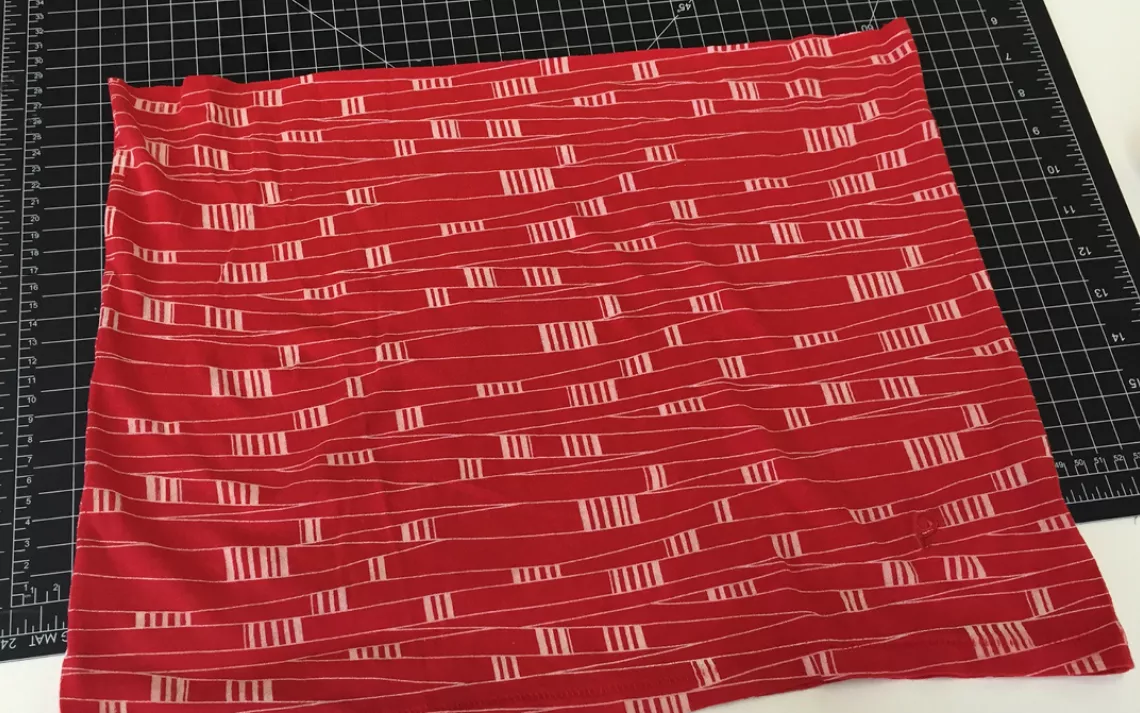
Cut the fabric along the line, removing the sleeves and upper part of the shirt.
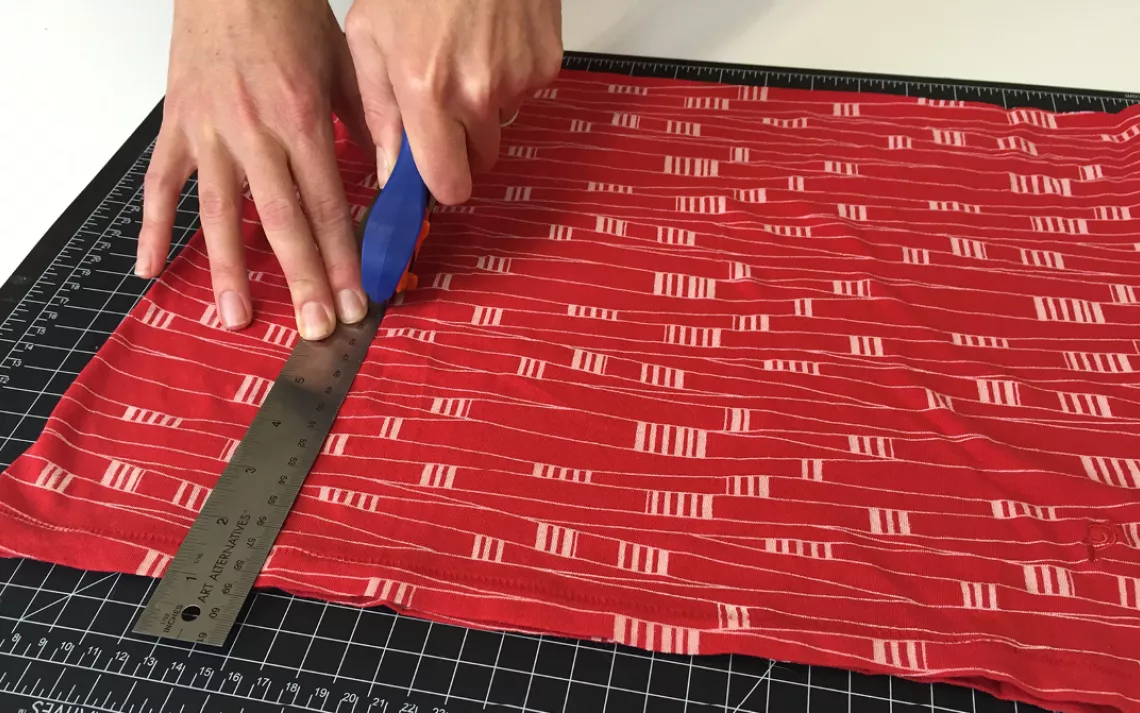
Decide the width you want for your bag and trim the sides accordingly. Or, skip this step and use the natural side seams of the T-shirt.
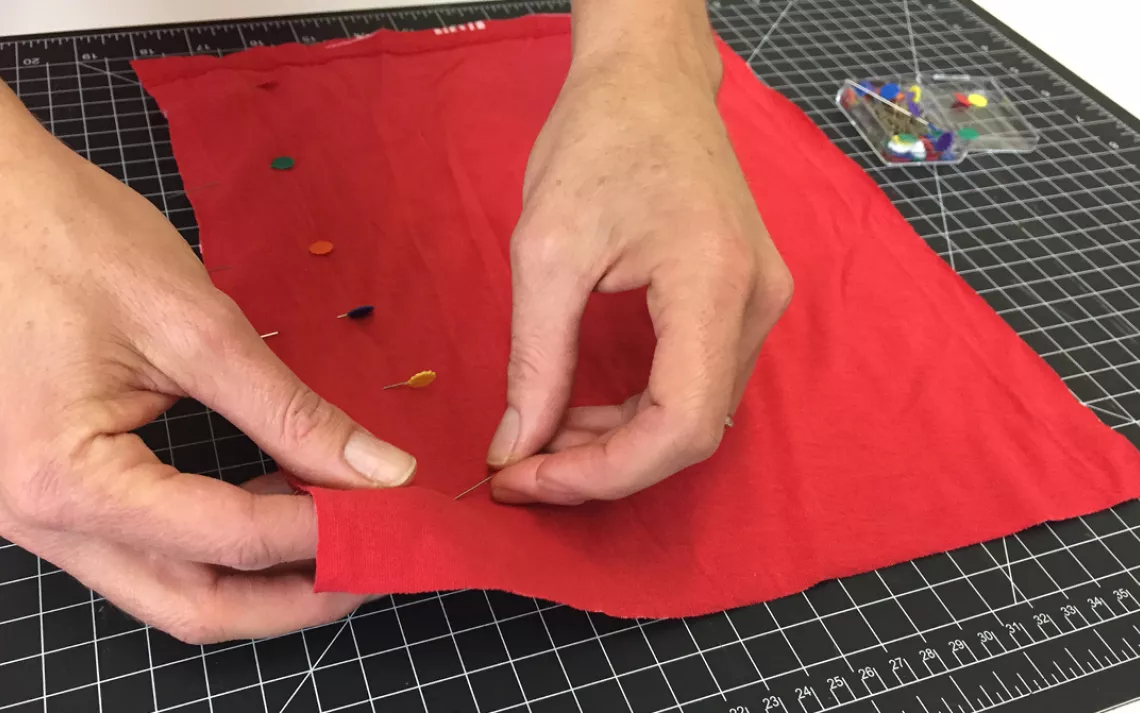
If, like me, you forgot to turn the shirt inside out in Step 1, do this now and pin the two pieces of fabric together.
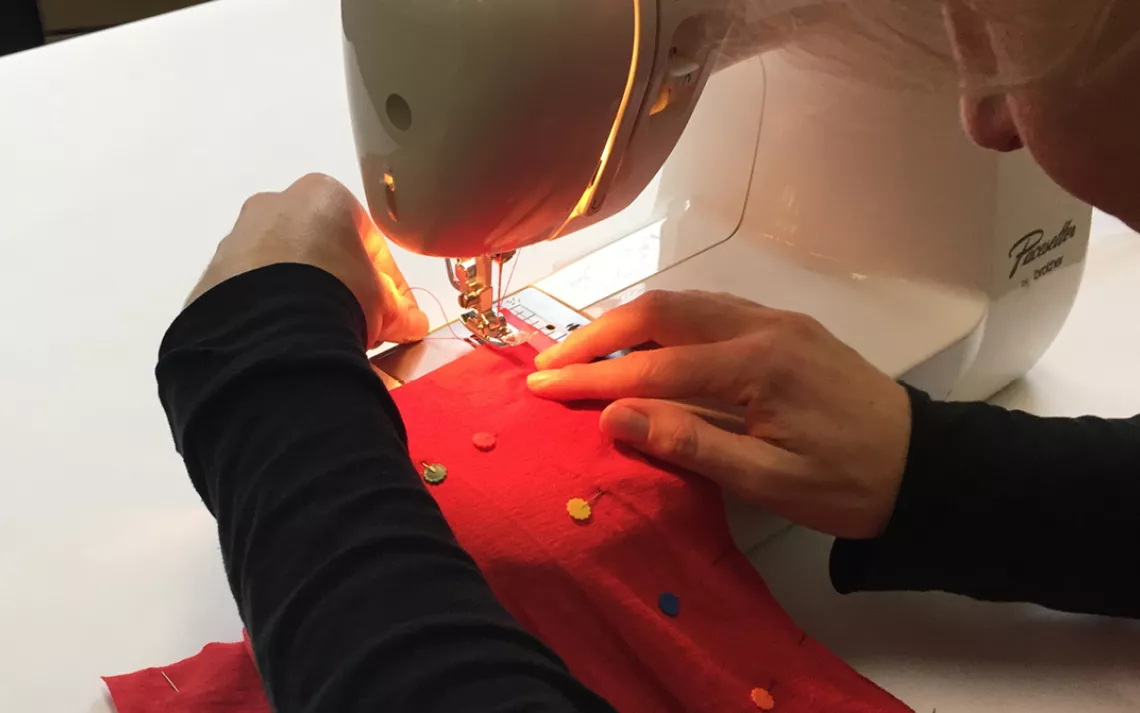
Sew along the bottom of the T-shirt (and the sides, if you trimmed the width), leaving about a half inch of fabric for the seam.
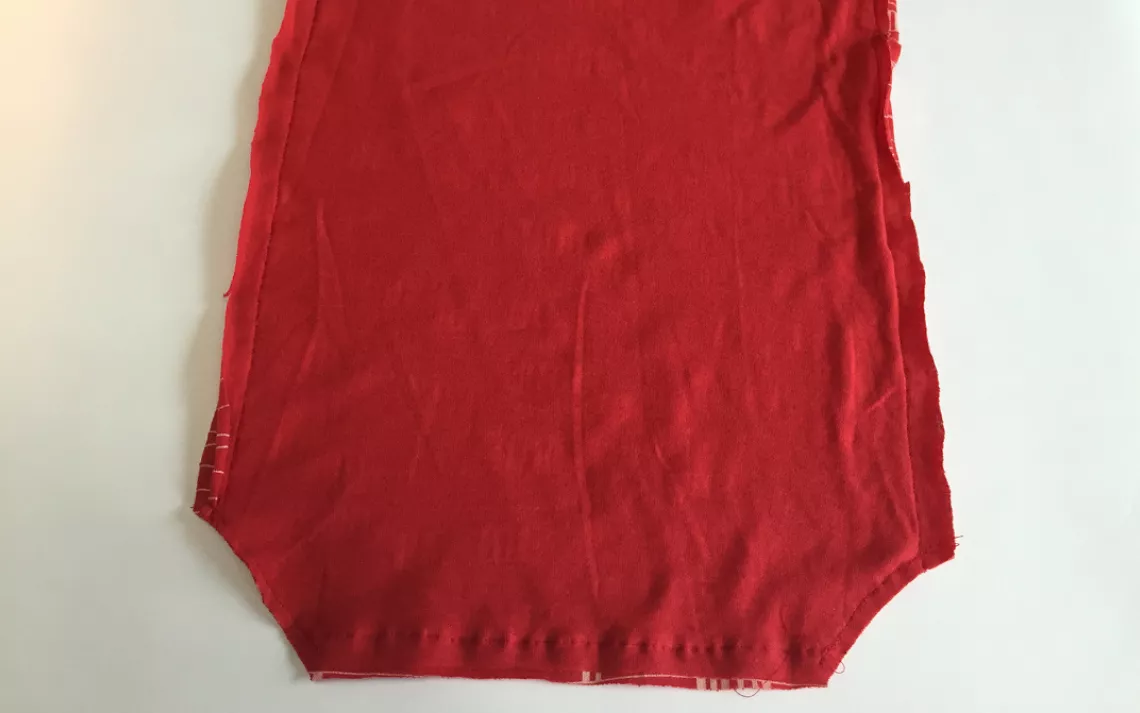
If you like, round the corners at the bottom of the bag: draw a diagonal line across one corner, sew along it and then snip off the excess fabric. Repeat with the other corner.
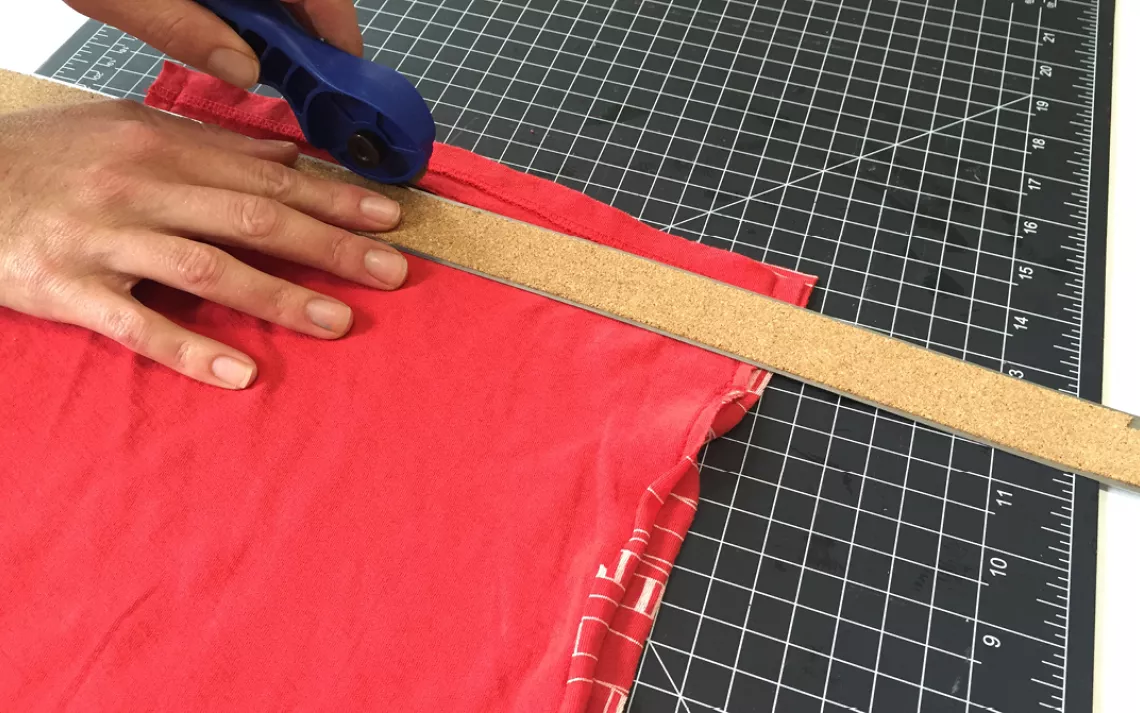
Decide where you would like to situate the handle (It should be at least one inch down from the top of the bag). Draw a line about three-inches long and cut.
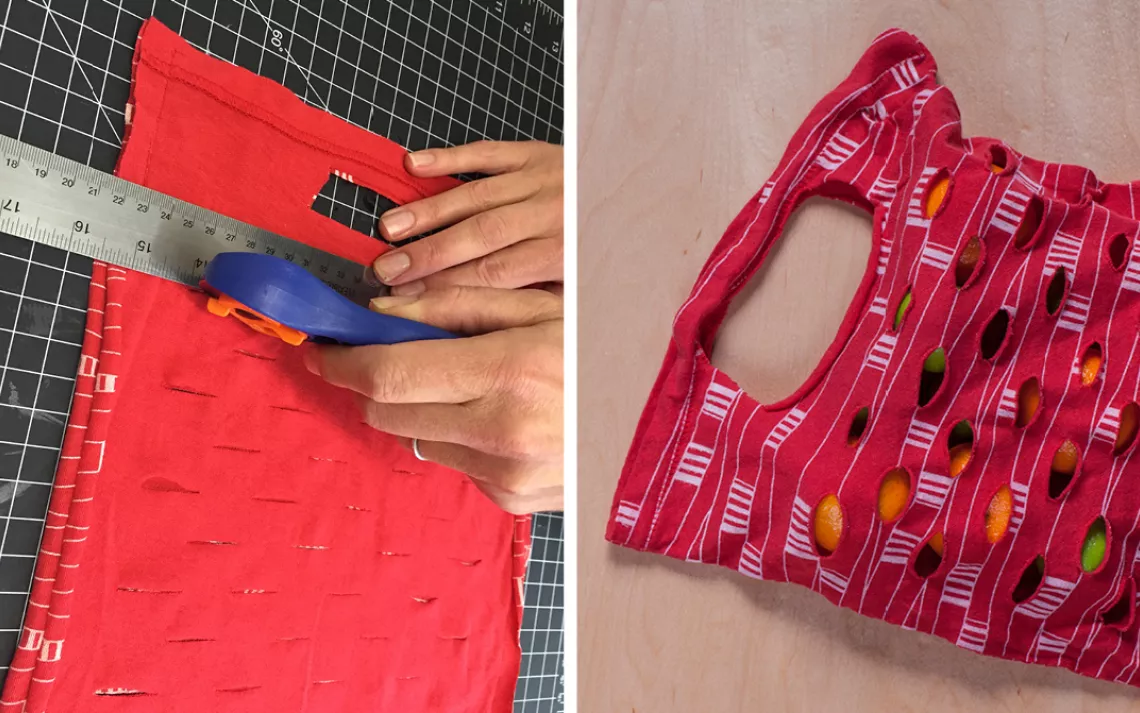
Starting about an inch down from the handle, make randomly spaced, one-inch slits all over the bag (If you cross the seams, make them a half inch long). If you want to be more precise, measure out and draw marks first.
Give your bag a good stretch and head to the market to load up on fresh, organic produce.
Wendy Becktold is the former senior story editor at Sierra. Follow her on Twitter @wlbecktold.
More articles by this author- Keywords:
- diy
- shopping
- food and drink
- lifestyle
 The Magazine of The Sierra Club
The Magazine of The Sierra Club



